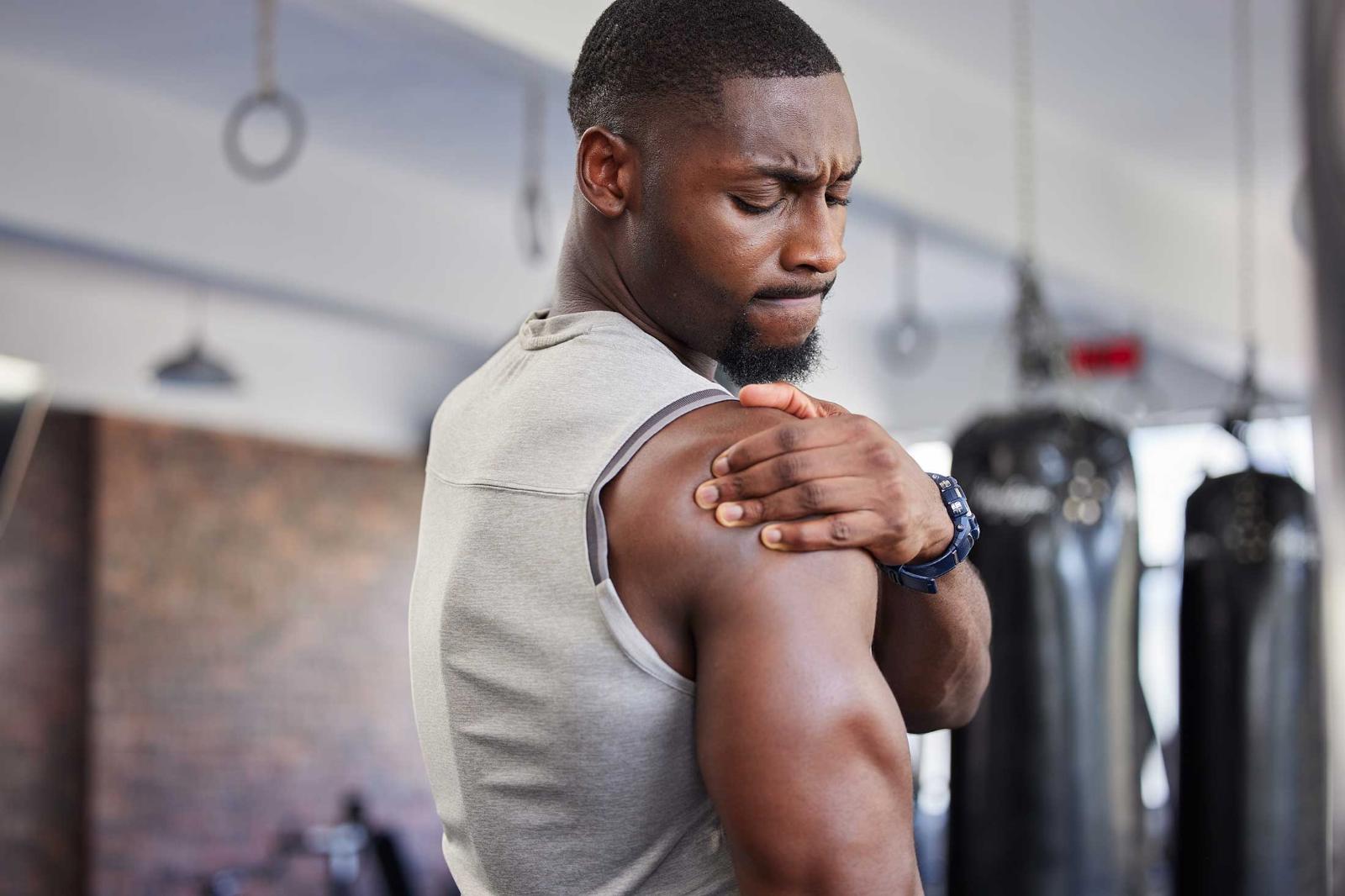After 6 years of coaching at the highest levels across multiple disciplines, the most common issues I see in my sports therapy clinic have to do with the shoulder. Statistics show us that shoulders are the most commonly injured area in many sports including CrossFit, weightlifting and rugby.
Written By
fred ormerod
Fred Ormerod is a freelance coach, army reserve medic, nurse, master’s student, and massage therapist. He’s spent a decade working in healthcare and five years coaching in one of Edinburgh’s leading training facilities.
What to Do for an Injured Shoulder
I give my athletes, from beginners to Olympians, 6 common exercises to help them prevent nagging injuries around life and training. Most of these exercises look at one of these key principles:
Strengthening the Lower Traps
Often neck and shoulder pain comes from an imbalance between upper and lower trapezius The lower trapezius should be the primary agonist once the arm is raised above 60° but is often neglected in favor of the upper traps.
Building the Infraspinatus
This muscle should be responsible for the first stage of raising the arm, but in athletes with poor mobility it is often trapped, and doesn’t properly generate force when lifting the arm overhead. This is the muscle that is often ‘pinched’ in the shoulders due to being weak and having an overzealous upper trap. Simply strengthening it can help avoid trapped nerves and numbing sensations down the arm.
Working on Functional Redundancy of the Upper Traps
”Overactive” upper traps can cause all sorts of issues, pathologically as well as in terms of performance, even leading to increased concussion risks and migraines. Effective training of deep cervical tissues can help prevent and fix this.
1) Supinated Grip Cable Machine Rows
This is a great exercise for focussing on shoulder blade retraction under constant load and is easier to mitigate for grip strength than a chin up (which are also excellent).
- Palms facing upwards.
- Lean forward to allow for shoulder blades to slide forward, pull them down and back as you row.
- Push your elbows backwards like you’re ‘trying to unhook your bra’, for those of us that know about such things.
Check out this demo video of IRONMAN athlete Kloe Gibson as we incorporated the exercise into her program to help with postural efficiency for her sport. View Here: https://youtu.be/v3R_Boou7Dg?si=zVYZAJSV-0jHW9Wd
2) Modified Cobra Pose/Diamond Push Ups
An interesting study looking at the electrical muscular stimulation of the lower trapezius found that these positions were some of the best body weight only movements to do so.
- Focus on a squeeze in between the bottom of your shoulder blades and allowing them to move as you press.
- Holding hands further back on either exercise will help here.
- Try holding a cobra pose with your hands by your side, palms facing upwards for time as well.
View here: https://youtu.be/0gbLj31OQNU?si=ypRy3Ag7dw3VInZb
3) Dead Hangs
Dead hangs allow for space in joints at the shoulder girdle. There is some reasonable research that links benefits experienced by our monkey ancestors and a relief in pain from modern human lives.
For an extra bit of fun try out a gibbon grip dead hang by turning your wrists out so your palms face backwards.
- Play around with pulling into your lats, mid back and shoulders while you perform these.
- Use straps if you need to hang for longer.
View here: https://youtu.be/5-kLlgkl_5I?si=9Ystt2vUY0hR0xtp
4) Low ROM Lateral Raises
Keeping the range of motion limited on these (around 60°) will help in building the infraspinatus, preventing the levator scapula from pulling against the shoulder blade as much.
- The first 60° of raising the arm should be primarily performed by the infraspinatus
- Turn pinkie fingers up to the ceiling to help and keep tension off traps and in the deltoids and rotator cuff
View here: https://youtu.be/G-piLwLu0d4?si=NVhqfyyymHHfPtuP
5) Lu Raises
These are an extension of the lateral raises and the shoulder should be trained through a full ROM in general. If they’re good enough for the Chinese Olympic lifting team they should work wonders for you, provided you start light and focus on good scapula movement.
- Focus on keeping a neutral rib cage by bracing into your core, think about keeping your sternum and pelvis in the same place throughout.
View here: https://youtu.be/G-piLwLu0d4?si=NVhqfyyymHHfPtuP
6) Neck Flexion and Extension
Going very light with these has been shown to cause what’s known as functional redundancy of the upper traps. This means that instead of using your traps to turn your head (when they should just be for lifting your shoulder blade and hyper extending your neck) the deeper muscles of your neck will do it, allowing for proper positioning and usage of the other muscles in your neck and shoulder.
- The same focus should be made in keeping the rib cage and shoulders still
- Move through a range of motion that is comfortable to you with a very light weight (see my article about neck training for further details).
- You could also try doing these while biting onto a towel which can help in activating the scalene muscles in the neck. This can cause what is called reciprocal inhibition of the muscles at the back of the neck (like how your triceps relax as you perform a bicep curl).
View here: https://youtu.be/uTJLZeEYIMA?si=RZ9X9xyqDvQAp9nB
This list is certainly not exhaustive and you should absolutely seek medical advice if you’re struggling with chronic pain. Feel free to check out my neck training program if you’re having issues around your neck or shoulders. It can be dropped into most training regimes and is an extremely cost effective way of helping your ailments.

